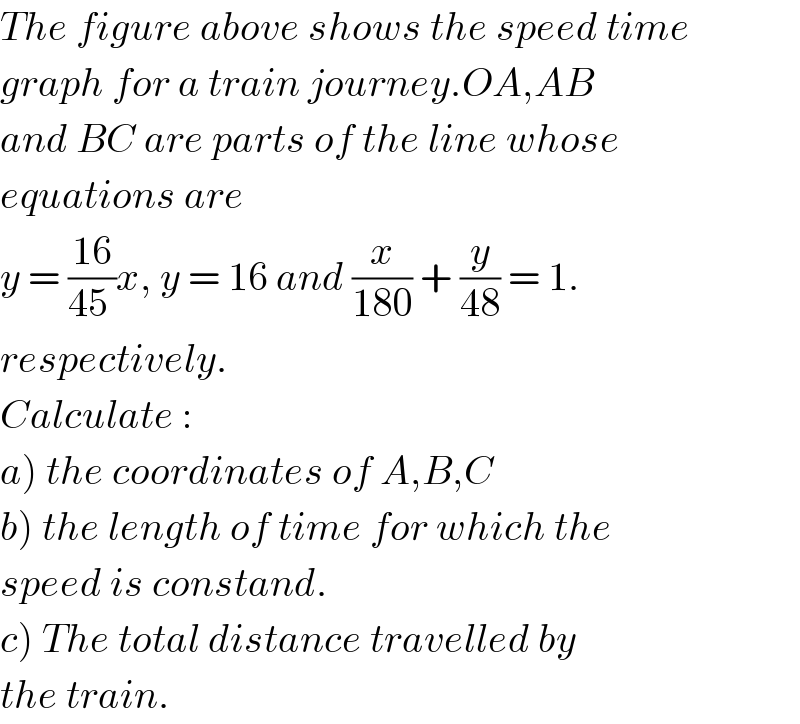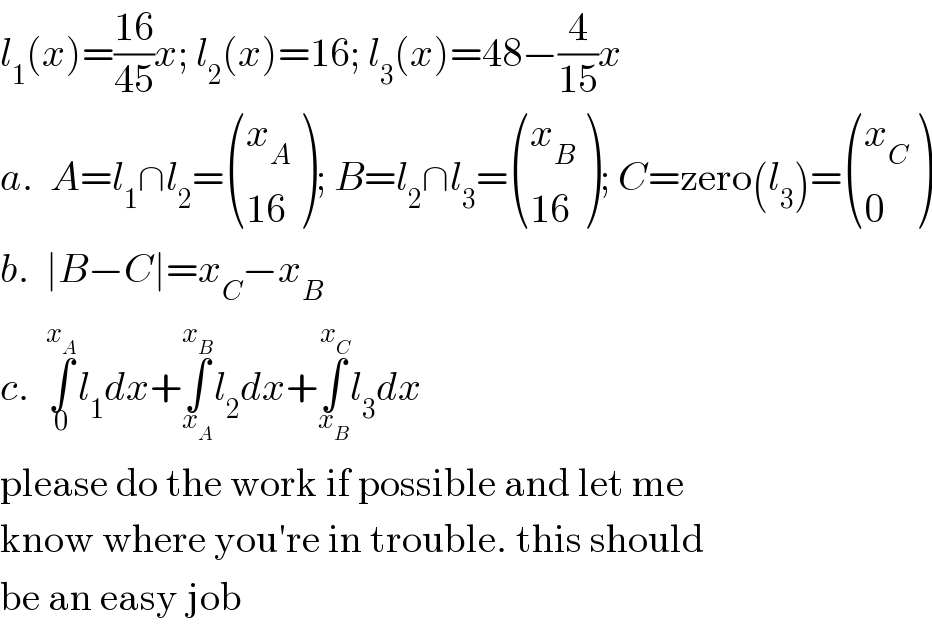
Question and Answers Forum
Question Number 38707 by Rio Mike last updated on 28/Jun/18

Commented by Rio Mike last updated on 28/Jun/18

Commented by MJS last updated on 28/Jun/18

Commented by Rio Mike last updated on 28/Jun/18

| ||
Question and Answers Forum | ||
Question Number 38707 by Rio Mike last updated on 28/Jun/18 | ||
 | ||
Commented by Rio Mike last updated on 28/Jun/18 | ||
 | ||
Commented by MJS last updated on 28/Jun/18 | ||
 | ||
Commented by Rio Mike last updated on 28/Jun/18 | ||
 | ||